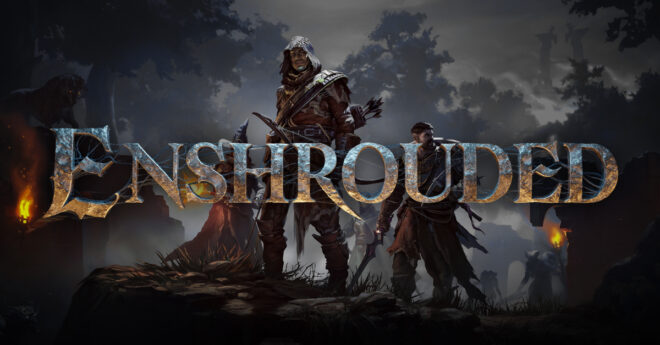
Diablo IV, the highly anticipated action role-playing game developed and published by Blizzard Entertainment, marks the fourth main installment in the beloved Diablo series. Since its announcement at BlizzCon 2019, fans have been eagerly awaiting its release, which is scheduled for June 5, 2023, with early access available from June 1.
Building upon the series’ signature features, Diablo IV brings back the immersive and addictive gameplay that has captivated fans for years. The game maintains its core elements of re-playable, procedurally generated dungeons and a strong emphasis on loot-focused character-building. However, it also introduces several new features that are sure to excite both newcomers and seasoned Diablo players. The inclusion of an expansive open world adds a fresh and dynamic dimension to the Diablo experience.
AT A GLANCE
Developer: Blizzard
Publisher: Blizzard Entertainment
Platforms: PlayStation 4, PlayStation 5, Windows, Xbox One, Xbox Series X/S
Release Date: June 5, 2023
Genre: Action role-playing, hack and slash
Final Score: 10/10
Story
The story of Diablo IV takes place in Sanctuary, a world caught in the eternal conflict between the High Heavens and the Burning Hells. Seeking respite from this unending battle, Inarius, and Lilith, two powerful beings, created Sanctuary and gave birth to the Nephalem, a hybrid race with immense power. Their hope was to create a haven where their offspring could thrive and escape the influence of their warring parents.
However, as time passed, Lilith grew fearful for the safety of the Nephalem and took drastic measures to protect them. Her actions led to a violent confrontation with Inarius, who ultimately banished her to the abyss, forever becoming her enemy. In the wake of this event, Lilith’s return signals a new era of darkness and despair for Sanctuary.
The story of Diablo IV revolves around the resurgence of Lilith and the havoc she unleashes upon Sanctuary.
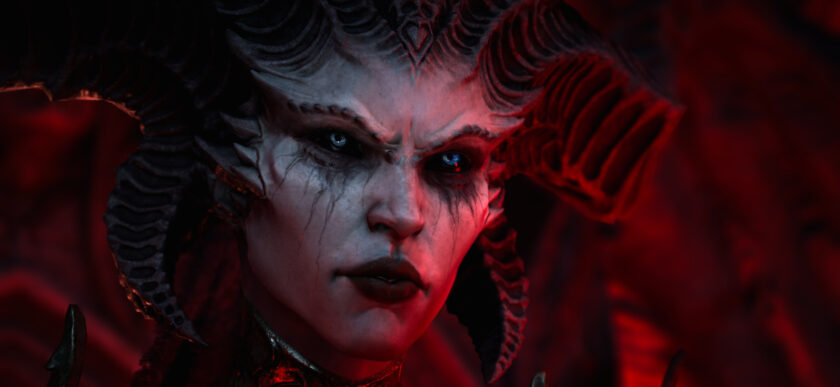
The story of Diablo IV delves into profound themes of redemption, sacrifice, and the relentless struggle against overwhelming darkness. It intricately explores the complex motivations driving the characters and delves into the reverberating consequences of their choices. Building upon the established lore of previous Diablo games, Diablo IV introduces fresh elements that expand the mythos and deepen the narrative tapestry.
With its captivating storytelling and immersive world-building, Diablo IV promises players an engrossing narrative experience that raises the stakes to unprecedented heights. The fate of Sanctuary hangs in the balance, and the impending doom casts a shadow of urgency upon the players as they plunge headfirst into the abyss, ready to confront the malevolence that threatens to consume everything they hold dear.
Instead of focusing on high-fantasy themes or political conflicts, the narrative revolves around the ordinary people of Sanctuary, lending a more personal and immersive tone to the storytelling.
Gameplay
In Diablo IV, the gameplay remains rooted in the core formula that has defined the series. Players embark on a journey to obtain stronger equipment by battling increasingly challenging enemies. The enemies are fought using character class skills that can be customized through equipment and talent trees, allowing for a diverse range of playstyles. This progression system serves as the means to advance through the captivating story and engaging quests.
Enemies in Diablo IV are divided into distinct monster families, each with its own unique theme, combat style, and location. Within these families, there are different archetypes that fulfill various roles, creating opportunities for synergistic abilities and strategic gameplay. The enemies are visually distinct, with unique silhouettes, stances, and weapons, making each encounter feel distinct and memorable.
Diablo IV takes character customization and class diversity to new heights, delivering a gameplay experience that offers countless possibilities for players to build and develop their characters. The game acknowledges the desires of the fan base, addressing the feedback received from Diablo III and returning to the roots of the franchise.
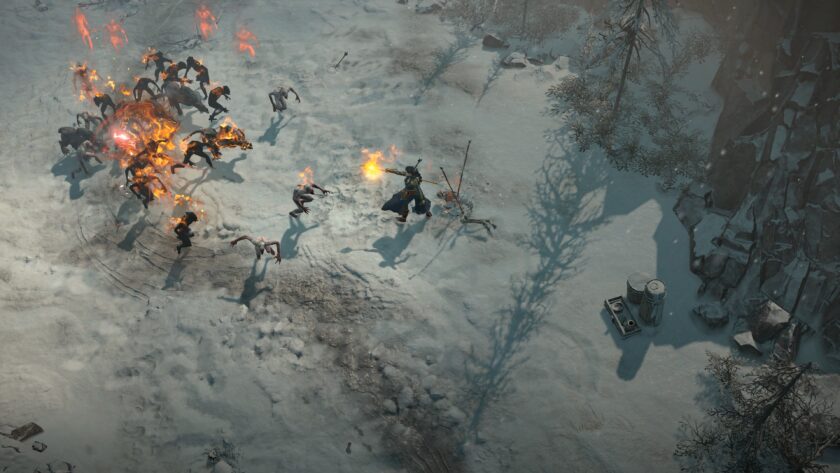
The class system in Diablo IV allows players to create truly unique and specialized builds. Gone are the limitations of a predefined skill tree; instead, players have the freedom to customize their characters’ skills and abilities to suit their preferred playstyle. This free-form skill system opens up a wealth of possibilities, encouraging experimentation and enabling players to create highly personalized characters.
Each class in Diablo IV possesses a wide range of skills and abilities that can be combined and customized in numerous ways. Whether you prefer the brute strength of the Barbarian, the devastating elemental magic of the Sorcerer, the shapeshifting and nature-based abilities of the Druid, the agility and precision of the Rogue, or the dark and mystical powers of the Necromancer, there is a class that will resonate with your preferred playstyle.

The Barbarian, known for its raw strength and melee prowess, returns from previous Diablo games. What sets the Barbarian apart is its ability to switch between different weapons on the fly during combat, allowing for versatile and adaptive playstyles.
The Sorcerer, a classic character archetype, wields the power of elemental magic. With a repertoire of fire, ice, and lightning spells, the Sorcerer can rain destruction upon enemies from a distance or unleash devastating area-of-effect attacks.
The Druid, another returning class from Diablo II, offers a unique blend of nature magic and shape-shifting abilities. Players can transform into different forms, such as a werewolf or a werebear, to gain enhanced combat abilities and unleash powerful elemental and storm-based magic.
The Rogue, making a comeback from the original Diablo game, excels in agile and swift combat. Players can choose between engaging enemies in close-quarters combat with bladed weapons or adopt a more ranged approach with a bow. The Rogue’s versatility allows players to adapt to different combat scenarios and playstyles.
The Necromancer, a fan-favorite from Diablo II and Diablo III, returns with its mastery of dark magic and necromantic arts. Players can summon an army of undead minions to fight alongside them, using their abilities to manipulate life force and decimate enemies.
In addition to the diverse classes, Diablo IV places a significant emphasis on character customization. Players have more freedom than ever before to personalize their characters, down to the finest details. The customization options include choosing character portraits, selecting the skin color of their character, and even adjusting specific features such as eye color, body markings, and accessories. With over 8 trillion appearance combinations available, players can create truly unique and individualized characters.
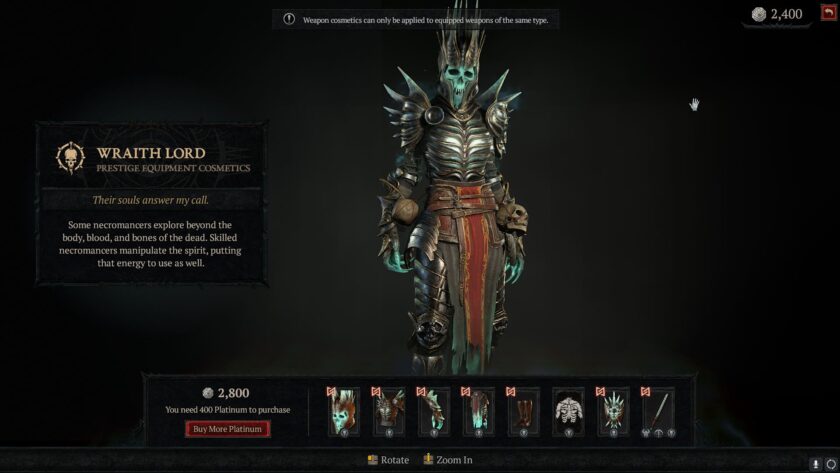
Furthermore, Diablo IV offers an unprecedented level of detail when it comes to loot and gear customization. The loot system features an extensive array of items, each with its own unique design and properties. From weapons and armor to trinkets and accessories, every piece of loot is intricately designed and visually distinct.
The game also grants players the freedom to transmogrify their equipment, allowing them to change the appearance of their gear while retaining its stats and bonuses. This means that players can customize their looks without sacrificing the power and effectiveness of their equipment. Whether it’s to create a cohesive and stylish ensemble or to express their personal aesthetic, the transmogrification feature ensures that players have complete control over their character’s appearance.
The game offers a sprawling map filled with diverse environments, from haunting forests to desolate wastelands, each teeming with dungeons, mobs, and formidable bosses waiting to be conquered. The seamless nature of the world ensures a continuous and uninterrupted gameplay experience, with minimal loading screens that only come into play during fast travel.
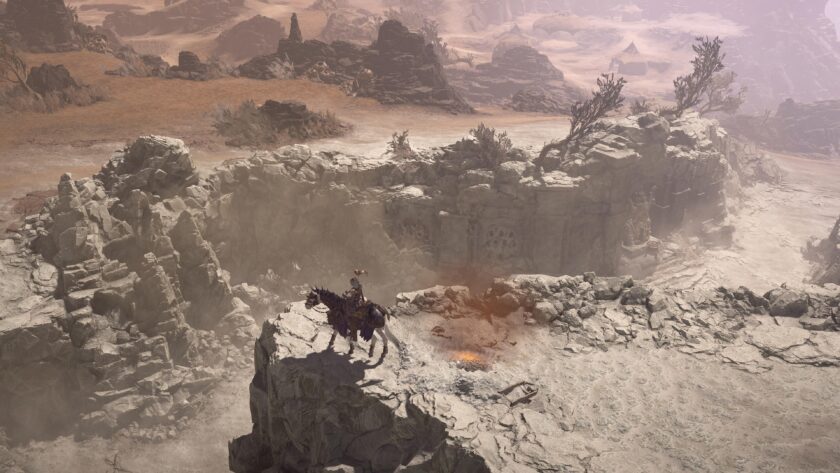
Exploration is a key element of Diablo IV, and players are provided with a trusty mount to traverse the expansive overworld quickly. This mount not only allows for faster travel but also adds a sense of immersion as you gallop across the diverse landscapes of Sanctuary. The open world is not just a backdrop; it is a living, breathing environment filled with hidden secrets, treasures, and challenges, rewarding those who venture off the beaten path.
Within this vast world, players will encounter multiple towns that serve as hubs of activity. These towns are bustling with merchants offering a variety of goods and services, as well as quest givers who will provide you with engaging missions and rewarding side quests. The towns serve as a gathering place for players, creating a sense of community and camaraderie. While Diablo IV encourages multiplayer interaction, it also caters to solo players, ensuring an enjoyable experience even when playing alone.
It is also possible to encounter other players in the overworld. This dynamic multiplayer aspect adds an extra layer of excitement and challenge to the game. Players can encounter each other while exploring, team up to take on tougher challenges, or even engage in friendly competition. The introduction of world bosses further enhances the multiplayer experience, as these formidable enemies require coordinated efforts from multiple players to defeat. However, the presence of online features never feels intrusive or detracts from the solo experience, allowing players to enjoy the game at their own pace and style.
The journey doesn’t end with completing the main story in Diablo IV. The game offers a wealth of endgame activities that provide ongoing challenges and opportunities for character progression. Once you finish the main story, you enter a phase where the true depth of the game’s content and mechanics become apparent.
In the endgame, Diablo IV presents players with various activities to test their skills and continue honing their character’s abilities. One of the primary objectives is to improve your build and acquire more powerful loot, pushing the limits of your class’s efficiency. This pursuit of optimizing your character becomes an ongoing endeavor as you strive to reach the pinnacle of your potential.
Additionally, Diablo IV reintroduces PvP (Player versus Player) combat, allowing players to engage in battles against other players in a dedicated PvP region of the open world. This adds a competitive aspect to the game, offering an opportunity to prove your prowess and compete against fellow adventurers.
As you progress through the endgame, you can further enhance and customize your character’s build and skills using Paragon points. These points can be allocated to upgrade various stats or unlock more potent effects, giving you greater flexibility to fine-tune your character’s playstyle and tailor it to your preferences.
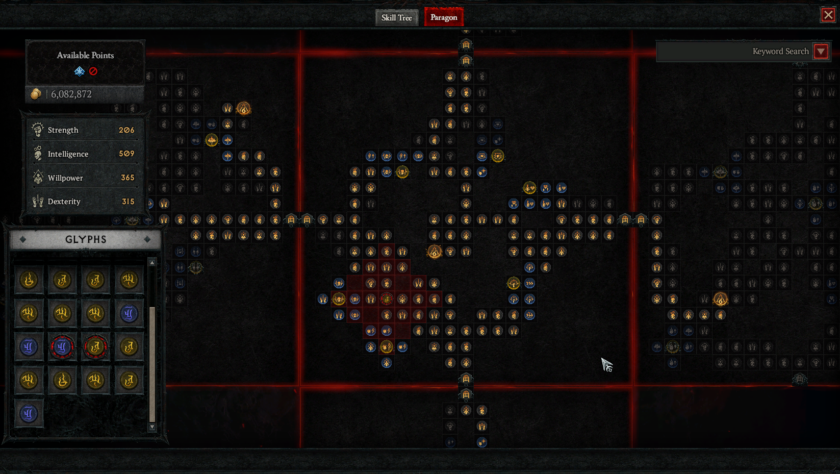
The endgame in Diablo IV encourages theory-crafting and experimentation, empowering players to design and refine their own unique builds. With a wide range of options and possibilities, you can explore different combinations of skills, gear, and talents to create a playstyle that suits your preferences and maximizes your effectiveness in combat.
Visuals, Audio, and Technical Performance
The attention to detail in the graphics was evident, with well-crafted textures and meticulous design that brought the game world to life. Playing on the PlayStation 5, I experienced the visual prowess of the console, with stunning visuals that immersed me in the hauntingly beautiful landscapes.
Character design in Diablo IV took a more realistic and grounded approach, aligning with the game’s thematic tone. The level of detail in character models was impeccable, and the extensive character creator allowed me to craft my own unique avatar in the grim world. Cutscenes were beautifully animated, advancing the plot and providing cinematic moments. What set Diablo IV apart was the emphasis on showcasing my character, with close-up shots that enhanced my personal investment in the game.
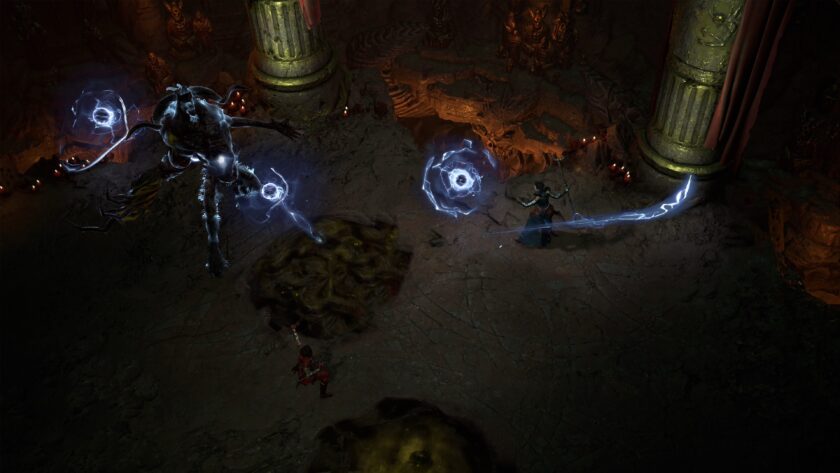
Voice acting in Diablo IV was top-notch, with talented actors bringing the characters to life. The dialogue delivery added depth and emotion to the storytelling experience. The sound design team deserved applause for their exceptional work. The sound effects were visceral and impactful, from the bone-crunching strikes of my weapons to the subtle nuances of my footsteps. The music set the mood perfectly, enhancing the dark atmosphere.
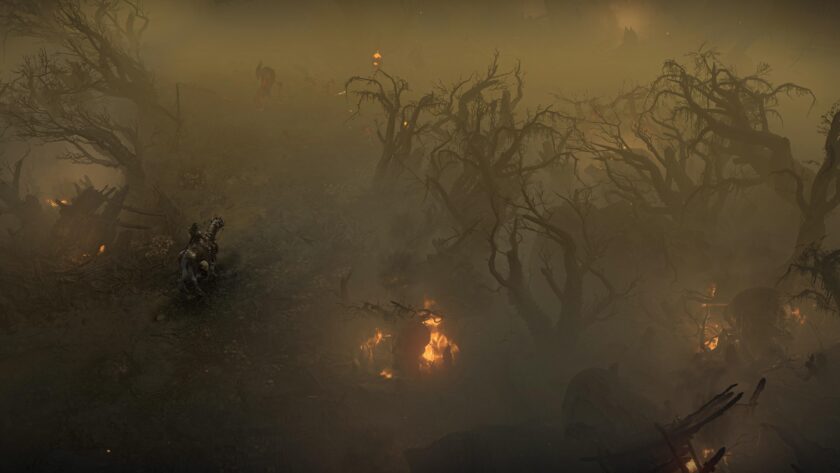
Diablo IV maintained its tradition of providing a fantastic console experience. The controls were expertly tailored for consoles, utilizing the face buttons and triggers effectively. Navigating menus, executing skills, and engaging in combat felt intuitive and responsive.
Visually, Diablo IV on PS5 aimed for a 4K resolution and a smooth 60 frames per second. The game’s optimization was commendable, rarely dipping below its target frame rate and providing a consistent and fluid gameplay experience.
In terms of technical performance, Diablo IV impressed with its stability. I encountered minimal bugs and issues, without any game-breaking problems. The development team’s attention to detail and commitment to delivering a polished experience were evident, allowing me to enjoy the game without significant disruptions.
Overview
Summary
Diablo IV offers a triumphant return to the dark and gritty world that fans fell in love with. With its diverse classes, deep customization options, and engaging gameplay, the game captures the essence of the Diablo franchise while introducing new elements and improvements. The open-world design, seamless exploration, and challenging endgame content provide endless hours of enjoyment. Visually stunning graphics, impeccable character design, and immersive sound design further enhance the experience. Whether playing solo or diving into multiplayer, Diablo IV delivers a captivating and rewarding adventure that will keep players hooked for hours on end. It's a must-play for both veterans and newcomers to the series.






